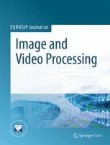EURASIP Journal on Image and Video Processing welcomes submissions to the new special issue on Mobile Image and Video Processing.
The intimate presence of mobile devices in our daily life, such as smartphones and various wearable gadgets like smart watches, has dramatically changed the way we connect with the world around us. Users rely on mobile devices to maintain an always-on relation to information, personal and social networks, etc. With a growing number of powerful embedded mobile sensors like camera, microphone, GPS, gyroscope, accelerometer, digital compass, and proximity sensor, there is a variety of data recorded and hence enables new sensing applications across diverse research domains comprising mobile media analysis, mobile information retrieval, mobile computer vision, mobile social networks, mobile human-computer interaction, mobile entertainment, mobile gaming, mobile healthcare, mobile learning, and mobile advertising. Regardless of the application fields, many issues and challenges brought by the emerging technologies for mobile image and video still lie ahead and many research questions remain to be answered. For example, seamless user experience has been identified as one key factor in designing mobile image and video applications for multiple form factors, but its provision is challenging and requires effective integration of rich mobile sensors and multidisciplinary research, such as visual content adaptation and user behavior analysis. In addition, for power saving purpose, application-driven efficiency is an important technical consideration in mobile image and video processing (e.g., how to offload computation-intense tasks to the cloud servers to save energy and extend battery lifetimes for mobile users?).
Nowadays, with the popularity of smartphones and various wearable gadgets, the breakthrough of mobile image and video technologies has come from all aspects. To name a few, MPEG has recently developed a new standard for mobile visual search, namely MPEG Compact Descriptors for Visual Search (MPEG CDVS). Also, the success of Instagram, a mobile authoring app, has attracted more than 200 million monthly active users until November 2014. Moreover, new wearables (e.g., smart watches such as Apple Watch or integrated displays such as Google Glass) as new types of digital personal assistants showed their potential to be the next-generation mobile media devices. Witnessing all these mobile breakthroughs, therefore, we believe that it is important to investigate the current advances and future trends in mobile image and video processing.
Potential topics include, but are not limited to:
- Emerging techniques for next generation video/image coding
- Novel image and video applications taking advantage of mobile devices
- Mobile image/video indexing and retrieval
- Mobile visual content adaptation and adaptive streaming
- Mobile visual search
- 2D/3D computer vision on mobile devices
- Visual content analysis, representation, and understanding with mobile and wearable devices
- Computational photography on mobile devices
- Mobile virtual and augmented reality
- Action/gesture/object recognition with mobile sensors
- Action/gesture/object recognition with mobile sensors
Submission instructions:
Before submitting your manuscript, please ensure you have carefully read the Instructions for Authors for EURASIP Journal on Image and Video Processing. The complete manuscript should be submitted through the EURASIP Journal on Image and Video Processing submission system. To ensure that you submit to the correct special issue please select the appropriate section in the drop-down menu upon submission. In addition, indicate within your cover letter that you wish your manuscript to be considered as part of the special issue on Mobile Image and Video Processing. All submissions will undergo rigorous peer review and accepted articles will be published within the journal as a collection.
Deadline for submissions: - July 31st 2016
Lead guest editor:
Wen-Huang Cheng, Academia Sinica, Taiwan
Guest editors:
Kai-Lung Hua, National Taiwan University of Science and Technology, Taiwan
Klaus Schoeffmann, Klagenfurt University, Austria
Wolfgang Huerst, Utrecht University, Netherlands
Jochen Huber, Synaptics, Inc.
Jenq-Neng Hwang, University of Washington, USA
Submissions will also benefit from the usual benefits of open access publication:
- Rapid publication: Online submission, electronic peer review and production make the process of publishing your article simple and efficient
- High visibility and international readership in your field: Open access publication ensures high visibility and maximum exposure for your work - anyone with online access can read your article
- No space constraints: Publishing online means unlimited space for figures, extensive data and video footage
- Authors retain copyright, licensing the article under a Creative Commons license: articles can be freely redistributed and reused as long as the article is correctly attributed
If you would like to let your peers know about this open special issue, download this Call for Papers and share it with them.
For editorial enquiries please contact editorial@jivp.eurasipjournals.com
Sign up for article alerts to keep updated on articles published in EURASIP Journal on Image and Video Processing - including articles published in this special issue!
